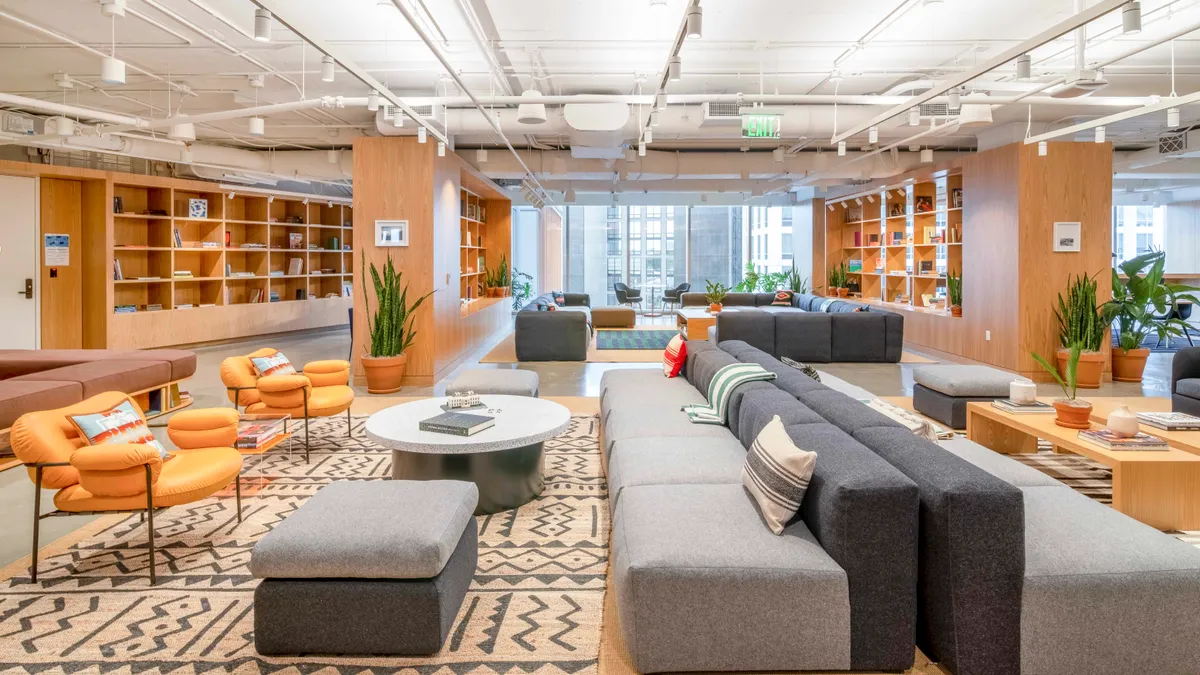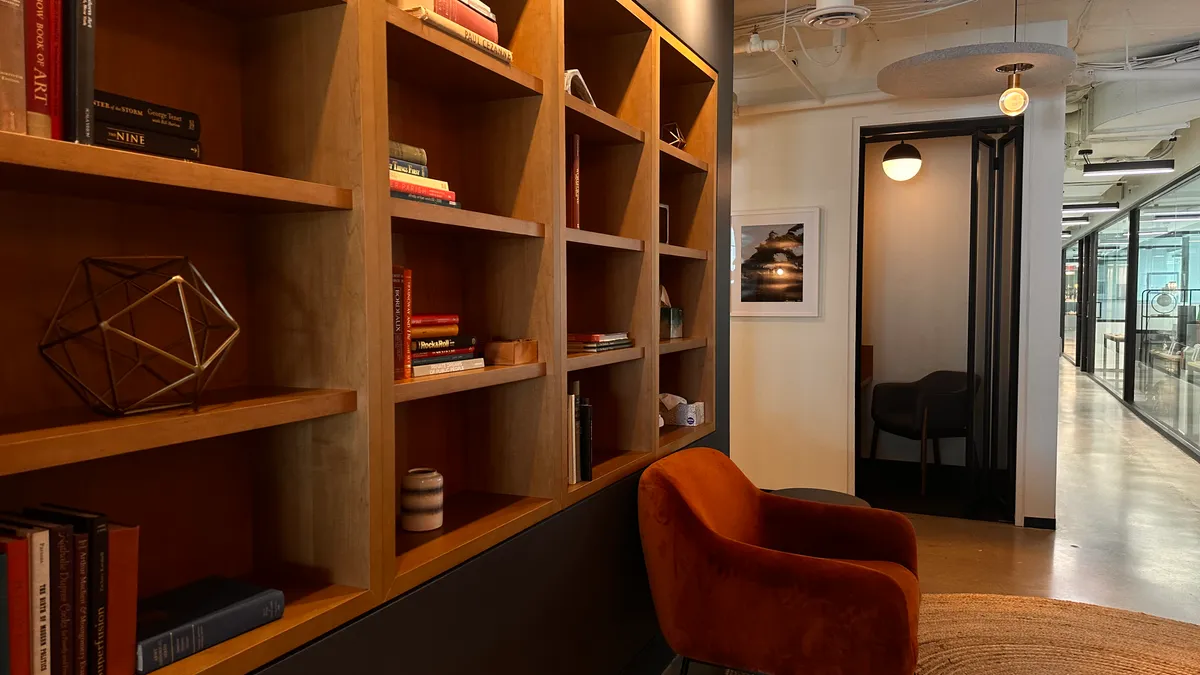By now, we're all familiar with the rhetoric driving staunch remote work advocates, their co-workers flush with office nostalgia and the hybrid work champions caught in between. When it comes to actually mapping out a "return to the office," however, employers, employees and office space vendors have grappled with many complex considerations for the past 19 months. Here are five things HR professionals should keep in mind before they Docusign that office building lease.
1. Don't force a fit
Wellness research and solutions firm Vitality Group underscored the dangers of one-size-fits-all approaches to COVID-era work models in an October 2021 report. Of the knowledge workers surveyed, 6% of respondents said they'd like to work from home one day a week; 15% said two days a week; 14% said three days a week; and 13% said four days a week. That's compared to 22% of respondents who said they didn't want to WFH at all and 30% who said they'd like to work remotely every day of their workweek.
Stats from the Vitaly report also support the ongoing narrative that employees would quit if forced to give up remote work: 60% of fully remote respondents and 45% of hybrid respondents told Vitality they'd dip if forced to return to the office full-time. Even if asked to work in-office part-time, 59% of remote respondents and 42% of hybrid respondents still said they'd quit.
The numbers continue to suggest that strong-arming employees into a singular work model is likely to yield disastrous consequences.
2. Nail down what 'office space' represents
Work as the world once knew it has far surpassed the point of no-return. That being said, if a company has gone partially or fully remote, it may be necessary for HR pros not just to reimagine "the office" but redefine its significance in the company workflow.
"The idea now is that the office is a tool. Not necessarily just a place where you go, 'Hi, I'm here. I'm working,' or punch a clock," Anthony Onesto, chief people officer at tech platform Suzy, told HR Dive. "Now it's like, 'All right, how do we think of the office as a tool, no different than Gmail or Slack or Google Meets?'"
3. Find options that prioritize flexibility
In Vitality's 2021 survey, 87% of respondents across the board said they felt some anxiety regarding a return to a physical work location; 36% said they were feeling extreme anxiety. HR pros, consider this: even the employees who are enthusiastic about a physical, communal office are experiencing some trepidation.
"Sometimes people don't know what they want, right? Oftentimes, employees are like, 'Yeah, I want to be in an office!' And then when you present them with an office, they're like, 'I don't know if I really want to be in an office,'" Onesto said. "You have to combine both of those to get closer to the truth."
As Onesto took advantage of remote work's normalization and the ability to recruit more comfortably from a global workforce, he also piloted a few return-to-office options. After some flops, WeWork's All Access pass hit the hybrid work sweet spot for Suzy employees.
"When we went completely virtual, that serendipity, that need to connect, that collaboration was lost. In some cases, to be honest, there are specific roles when you're training with a junior or newer employee that require that connection of sitting next to them," Onesto said. "All Access now gives us incredible global access to all these different WeWorks for those folks that maybe want to come together and they can coordinate and come together into these WeWorks or if they don't necessarily need to have that serendipity or that connection and just want to literally get out of their apartments."
Alternatively, there are ways to adapt a company's headquarters to a hybrid arrangement. There are apps, for example, that allow employees to reserve spaces and coordinate with co-workers. Stefan Schwab, CEO of one such app — Comfy — told HR Dive that his product was primarily used for flexibility management and scheduling prior to the pandemic. Now, it's been leveraged for capacity management related to COVID-19 restrictions.
Regarding hybrid work game plans, Schwab said conversations should be collaborative between HR teams, CFOs and other C-suite execs and employees at large, of course. "The challenge is that it's new for everyone. So everybody has to find their way," Schwab said. "And also assume that we won't get it right for the first time. But it doesn't matter. We just need to pivot again because it's all new for us."
4. Prepare for growing pains
Just like with any new or revamped tool, there will be a learning curve or even some resistance. As companies work out the kinks, Schwab said he encourages leaders to be forthcoming about when mistakes are made regarding remote work policies. "I think when you're transparent like that, you can get a better buy-in on the journey than if you just say, 'No, this is how we're going to do it.'"
Even with this golden implementation of co-working, Onesto said he has received feedback that comes down to this: There may be nothing quite like the coziness and convenience of a home office set-up.
"You probably have an awesome setup in your bedroom. And so you lock in, you set up and you're comfortable. Now, you go to a WeWork and all you have is your laptop. You don't have your second screen. You don't have all these other things that make you entirely productive, [...] because these are open desks, these are hot desks."
Similarly, Schwab opined that designated company worksites will now just be one facet of work life. "The office of the future will compete with everything, because you can meet in a cafe. You can 'meet' at the home office, virtually. You also can meet in a public space. So, what do you do now?" Schwab asked. The dilemma stakeholders face: Either they make office space as appealing to employees as the office with zero commute, adequate sunshine, domestic flora and fauna, snacks on demand and a non-existent dress code, or they make the office "superior to all other spaces you can meet."
Working at Comfy, Schwab said he has found the office's main "value add" to be collaboration.
5. Check the temperature of your workplace — frequently
In this ever-shifting world, HR pros need to be adaptive. Instead of playing whack-a-mole with employees' work preferences, people teams can simply collect and apply data. Onesto mentioned that his team pulses Suzy employees weekly. "We ask our employees how they are doing on a weekly basis. In that [survey], we actually have open-ended questions that we add in or pull out based on things that we need," he explained.
For example, the survey included questions like, "If you were to go back into the office, would you go into the office: a couple of times a week, once a week, monthly, or never?" — potentially giving Suzy's HR department a sturdy foundation for future return-to-the-office plans.

















